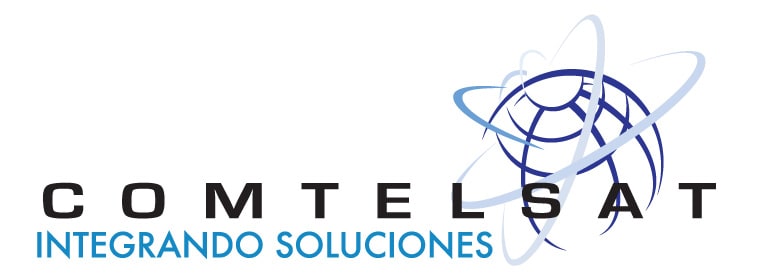About cookies on this site Our websites require some cookies to function properly (required). In addition, other cookies may be used with your consent to analyze site usage, improve the user experience and for advertising. For more information, please review your options. By visiting our website, you agree to our processing of information as described in IBM’sprivacy statement. To provide a smooth navigation, your cookie preferences will be shared across the IBM web domains listed here.
To keep their channels on air 24/7, broadcasters need resilient IT platforms that can deliver petabytes of video smoothly and reliably. And to gain a competitive edge, they need machine-learning algorithms that can turn existing video content into new business value. To help its clients address both challenges, Comtelsat builds solutions with IBM Cloud® and IBM® Aspera®.
To help government organizations and TV companies collaborate, Comtelsat wanted to make it easier to share, manage and distribute video content, such as political campaign ads and government broadcasts.
Comtelsat used IBM Cloud and IBM Aspera to create applications that provide a seamless process for government agencies to create and upload content, and for TV networks to access and broadcast it.
Results
content distribution process empowers agencies to get new content on-air in less than a day
unplanned downtime helps ensure that important messages are broadcast at the right time
the potential to harness AI for automatic closed captioning and content classification
Empowering public service broadcasting
As a medium for public service messages—from election campaign spots to presidential addresses, health and education campaigns, and natural disaster warnings—television is one of the most effective ways for a government to communicate with its citizens.
However, collaboration between government organizations and broadcasters doesn’t always run smoothly. During an election, for example, political parties may struggle to keep their broadcasts aligned with the latest developments of their campaigns, due to long lead-times required to distribute new video content to broadcasters.
Israel Gómez, Director General at Comtelsat, a systems integrator that specializes in supporting media and entertainment companies in Mexico and across Latin America, explains:
“In the past, it often took two weeks for political parties to get their messages broadcast on TV. It was literally a matter of shipping tapes to the TV networks by courier. The introduction of live satellite links accelerated the process somewhat, but parties had to work directly with broadcasters to record their content—so it still took days to coordinate.”
In a world where citizens can record high-quality video with their webcams or smartphones, and share it instantly with millions of people on YouTube or Twitter, the slower cadence of traditional broadcasting can become a liability.
“Today, people are used to 24-hour news channels and internet news sites, so if an important story breaks during a campaign, they expect politicians to react immediately,” says Gómez. “Our clients asked us to find a way to make that happen—which is why we turned to IBM Cloud technologies.”
Cloud is not a commodity
Comtelsat was already using IBM Aspera technologies to provide a fast, secure transfer for the petabytes of video data that its clients send and receive every year.
“When the opportunity arose to work on these government projects, our first thought was to use a commodity public cloud infrastructure,” says Gómez. “But we realized that for us, cloud isn’t a commodity—it’s a core element of the solutions we build.”
Comtelsat selected IBM Cloud bare metal servers, which offer a highly configurable infrastructure that the company can tailor to the specific needs of each client. With a single-tenant architecture, each server is fully dedicated to the workloads that Comtelsat assigns to it, so there is no danger of having to compete with other users for resources. Moreover, each client’s sensitive data can be completely isolated, creating a security-rich environment.
To provide an effective repository for large volumes of video data, Comtelsat uses IBM Cloud Object Storage. The solution’s highly scalable and resilient cluster architecture helps to protect data against risk, even if one or more storage nodes fail. Meanwhile, its advanced algorithms make it possible to store fewer redundant copies of each file, keeping costs low. The cloud object storage solution also integrates directly with IBM Aspera on Cloud to enable rapid and reliable transfer of video data in and out of the cluster.
Gómez adds: “There is a human aspect too. The relationship with our cloud provider and the support they provide is just as important as the technology itself. IBM has the infrastructure here in Mexico, they speak the language, and they have a very strong technical staff. Of course there are other players, but they don’t feel local—IBM plays for the local team, worldwide.”
Seamless, same-day broadcasting
Comtelsat uses the high-performance IBM Cloud infrastructure to host several applications that help government organizations and political parties collaborate with partners in the broadcasting industry.
For example, in the run-up to an election, political parties can simply record their own videos and upload them to a web portal managed by the government agency that oversees electoral broadcasts. The agency can check the content, make sure it complies with relevant laws and broadcasting standards, and approve it for release. Then the TV networks can access and download the content, and schedule it for broadcasting during one of the party’s designated slots.
Gómez comments: “We’ve streamlined a process that used to take days or weeks down to a point where a party can record a new video in the morning, and see it broadcast on live TV that same evening. It’s a quantum leap for political campaigning in Mexico, because it means each party can adapt their campaign in real time as new themes and issues evolve.”
A similar Comtelsat application in the IBM Cloud helps manage the creation and distribution of official government broadcasts, such as presidential addresses, emergency and alert messages, or campaigns from the ministries of health and education. It also handles the live streaming and archiving of every session of the national parliament.
Looking to the future, Comtelsat sees the IBM Cloud as an ideal platform to help enrich these applications with artificial intelligence and machine learning.
“We’re very excited about IBM Watson,” says Gómez. “If we can train it to understand all the regional variations of Mexican Spanish, then it will be a wonderful tool to help our clients extract more value from millions of hours of archived video footage. For example, it could help to automatically identify the speakers in each parliamentary debate, and annotate the video so that journalists or researchers could find and analyze each politician’s contribution.”
More broadly, machine-learning techniques could be useful for any organization with a large video archive—especially broadcasters. For example, Mexico has strict regulations around closed captioning for TV content, and adding subtitles to archive video footage is an expensive and laborious process. Watson’s natural language understanding capabilities could make it possible to automate the closed captioning process, saving considerable time, effort and money for broadcasters.
Gómez concludes: “I’ve heard an estimate that businesses are only able to analyze about 20 percent of their data. In the media industry, it’s even less than that, because we’re only just starting to find ways to analyze video data effectively. Working with the IBM Cloud and Watson teams helps us explore the new frontier of video analytics and find solutions that could help our clients truly transform their industry.”
With over 25 years of experience in the media and entertainment industry, Comtelsat (link resides outside ibm.com) acts as a specialist systems integrator, providing end-to-end services and solutions to help some of the world’s leading broadcasters run their operations in Mexico and across Latin America.
Legal
© Copyright IBM Corporation 2018. 1 New Orchard Road, Armonk, New York 10504-1722 United States.
Produced in the United States of America, May 2018.
IBM, the IBM logo, ibm.com, Aspera, IBM Cloud, and IBM Watson are trademarks of International Business Machines Corp., registered in many jurisdictions worldwide. Other product and service names might be trademarks of IBM or other companies. A current list of IBM trademarks is available on the web at “Copyright and trademark information” at ibm.com/trademark.
Not all offerings are available in every country in which IBM operates.
The performance data and client examples cited are presented for illustrative purposes only. Actual performance results may vary depending on specific configurations and operating conditions.
All client examples cited or described are presented as illustrations of the manner in which some clients have used IBM products and the results they may have achieved. Actual environmental costs and performance characteristics will vary depending on individual client configurations and conditions. Contact IBM to see what we can do for you.
The client is responsible for ensuring compliance with laws and regulations applicable to it. IBM does not provide legal advice or represent or warrant that its services or products will ensure that the client is in compliance with any law or regulation.

